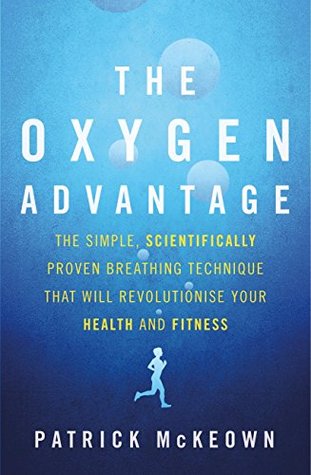More on this book
Community
Kindle Notes & Highlights
Read between
July 7 - July 9, 2022
The process of breathing has been warped by chronic stress, sedentary lifestyles, unhealthy diets, overheated homes and lack of fitness.
These in turn contribute to lethargy, weight gain, sleep problems, respiratory conditions and heart disease.
the primary stimulus to breathe is to eliminate excess carbon dioxide from the body.
Correct breathing both relies on and results in the right amount of carbon dioxide being retained in your lungs.
The problem is not a lack of oxygen in their blood, but that not enough oxygen is being released from the blood to tissues and organs, including the brain, resulting in feelings of lethargy and exhaustion.
This happens because too much carbon dioxide has been expelled from their bodies.
it doesn’t just happen while we’re conscious; many people sleep with their mouth open, and whether they realise it or not, this drags down their physical and mental energy.
the urge to take bigger, deeper breaths when we hit the wall during exercise does not provide the muscles with more oxygen but effectively reduces oxygenation even further.
Efficient breathing means that fewer free radicals are produced, reducing the risk of inflammation, tissue damage and injury.
Each time that your BOLT score increases by 5 seconds, you will feel better, with more energy and reduced breathlessness during physical exercise. The aim of the Oxygen Advantage programme is to increase your BOLT score to 40 seconds, and this can be realistically achieved.
every time I look in the mirror I see the results from my years of mouth breathing. Dentists and orthodontists have also documented these profound facial changes as a result of habitual mouth breathing: narrow jaws, crooked teeth, sunken cheekbones and a smaller nasal cavity. While orthodontic treatment and the wearing of braces is epidemic among modern-day teenagers, it was normal for our ancestors to have wide faces with perfectly shaped teeth.
when a cow or sheep stands motionless with its neck extended and mouth open, it is very sick – time to call the vet.
The production of nitric oxide in the nasal sinuses can be increased by simply humming. In an article published in the American Journal of Respiratory and Critical Care Medicine, Drs Weitzberg and Lundberg described how humming increased nitric oxide up to fifteen-fold in comparison with quiet exhalation. They concluded that humming causes a dramatic increase in sinus ventilation and nasal nitric oxide release.
it comes as no surprise that humming is also practised during certain meditation techniques.
The commonly used practice of taking big breaths is based on the misconception that taking in more air will increase the oxygen levels of the blood. However, since arterial blood is already almost fully saturated with oxygen (between 95 and 99 per cent) during normal, healthy breathing, ‘big’ breathing is rendered totally unnecessary.
Creating an air shortage by holding the breath during your warm-up is vitally important to cause an accumulation of carbon dioxide in the blood before physical exercise commences.
You can check whether you are pushing yourself too hard during physical exercise by exhaling normally and holding your breath for 5 seconds. When you resume breathing through the nose, your breathing should remain controlled. If you find that you lose control of your breathing, you are pushing yourself too hard.
A study group of men aged between nineteen and thirty-eight drank about 480ml of beetroot juice every day for a week. This resulted in a ‘remarkable reduction’ in the amount of oxygen required to perform exercise in comparison with a control group who drank water: the juice drinkers were able to cycle up to 16 per cent longer before tiring.


